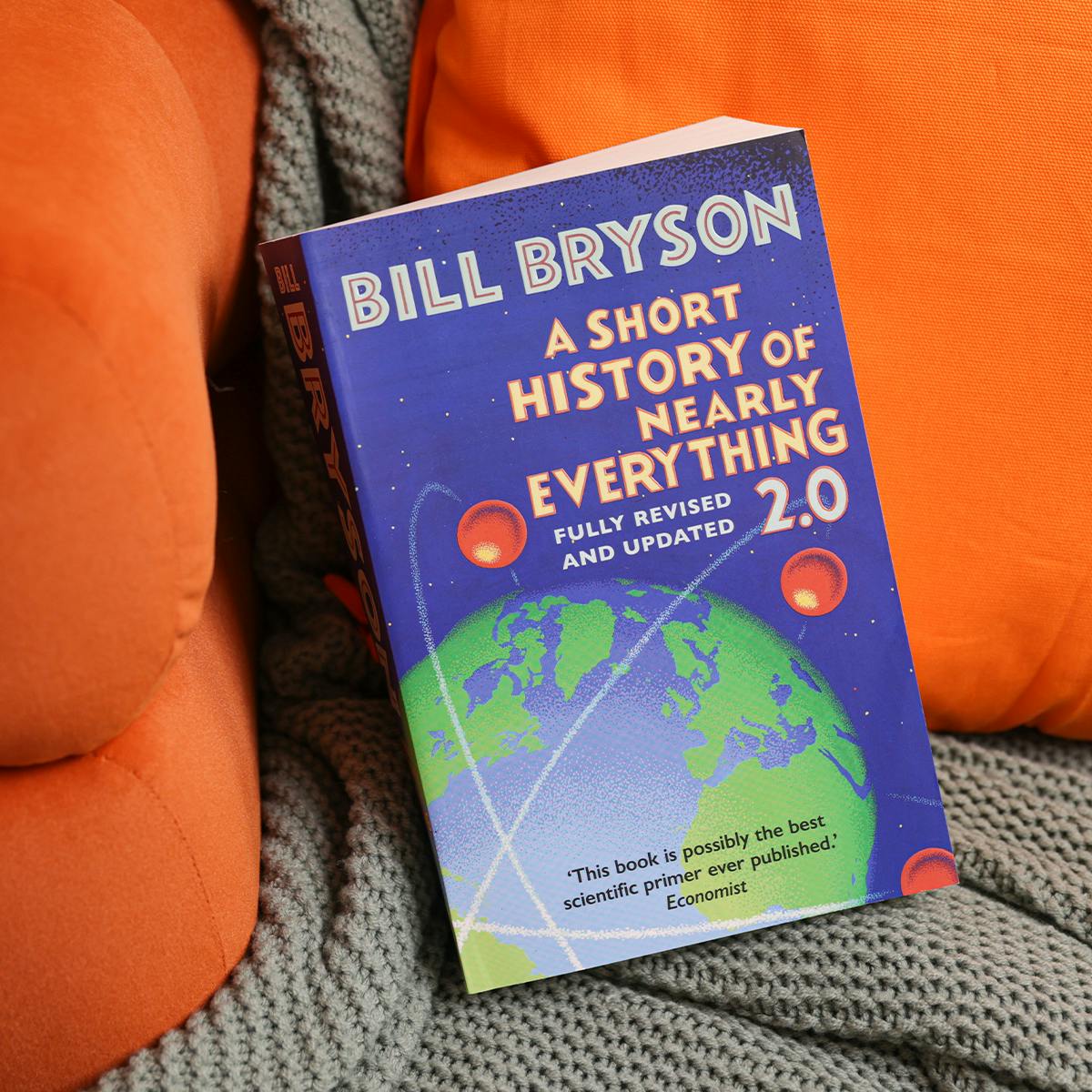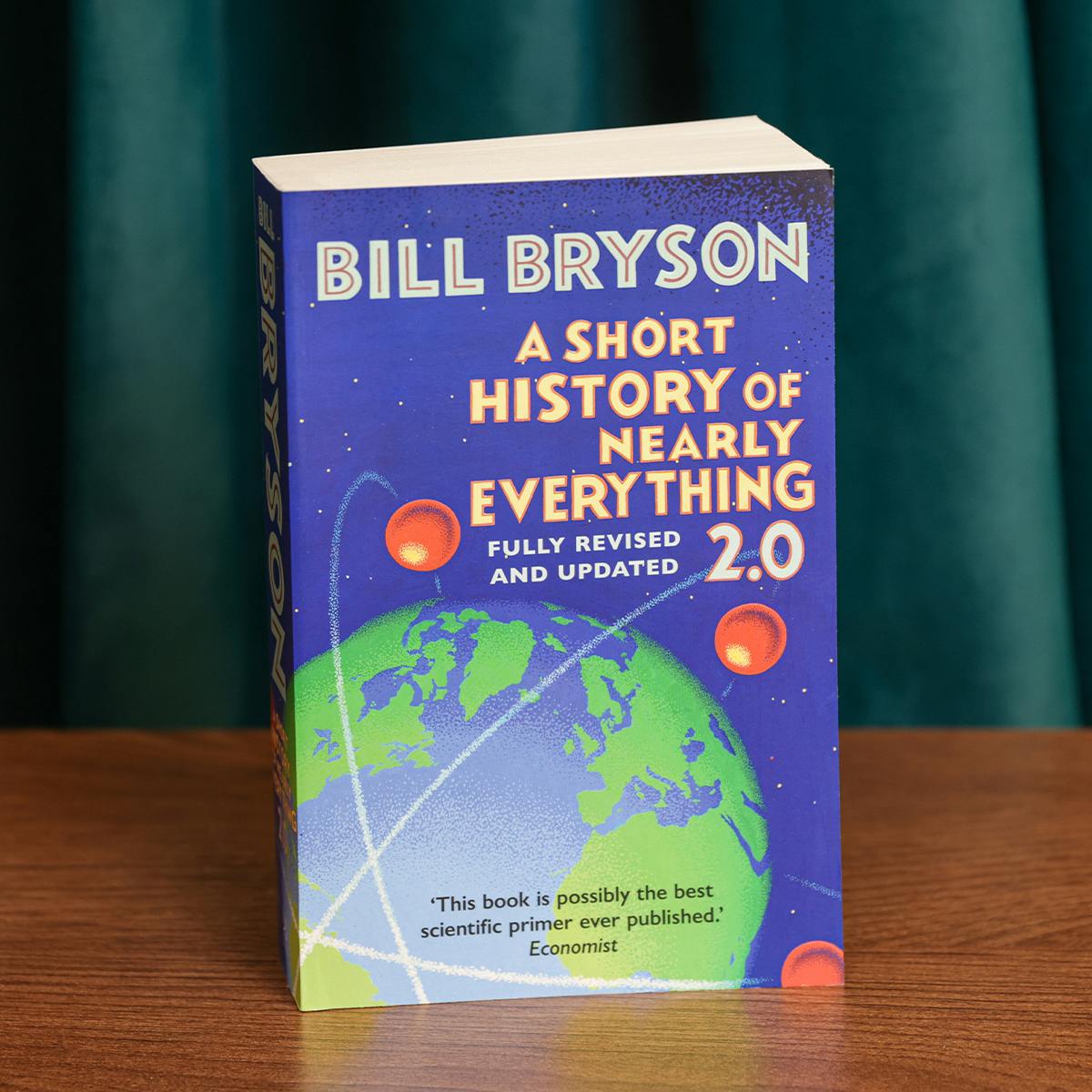- Published: 28 October 2025
- ISBN: 9781529966817
- Imprint: Doubleday
- Format: Trade Paperback
- Pages: 656
- RRP: $40.00
A Short History of Nearly Everything 2.0
- Published: 28 October 2025
- ISBN: 9781529966817
- Imprint: Doubleday
- Format: Trade Paperback
- Pages: 656
- RRP: $40.00
Mr Bryson has a natural gift for clear and vivid expression. I doubt that a better book for the layman about the findings of modern science has been written.
Telegraph
A fascinating idea, and I can't think of many writers, other than Bryson, who would do it this well. It's the sort of book I would have devoured as a teenager. It might well turn unsuspecting young readers into scientists.
Evening Standard
A genuinely useful and readable book. There is a phenomenal amount of fascinating information packed between its covers ... A thoroughly enjoyable, as well as educational, experience. Nobody who reads it will ever look at the world around them in the same way again
Daily Express
The very book I have been looking for most of my life... Bryson wears his knowledge with aplomb and a lot of very good jokes.
Daily Mail
Of course, there are people much better qualified than Bill Bryson to attempt a project of this magnitude. None of them, however, can write fluent Brysonese, which, as pretty much the entire Western reading public now knows, is an appealing mixture of self-deprecation, wryness and punnery.
The Spectator
Hugely readable and never obfuscating.
The Sunday Times
This most enjoyable of books ... A travelogue of science, with a witty, engaging, and well-informed guide.
The Times
Bill Bryson has an unmatched gift for explaining the most difficult subjects in the clearest possible way.
Mail on Sunday
Lucid, thoughtful and, above all, entertaining.
The Scotsman






